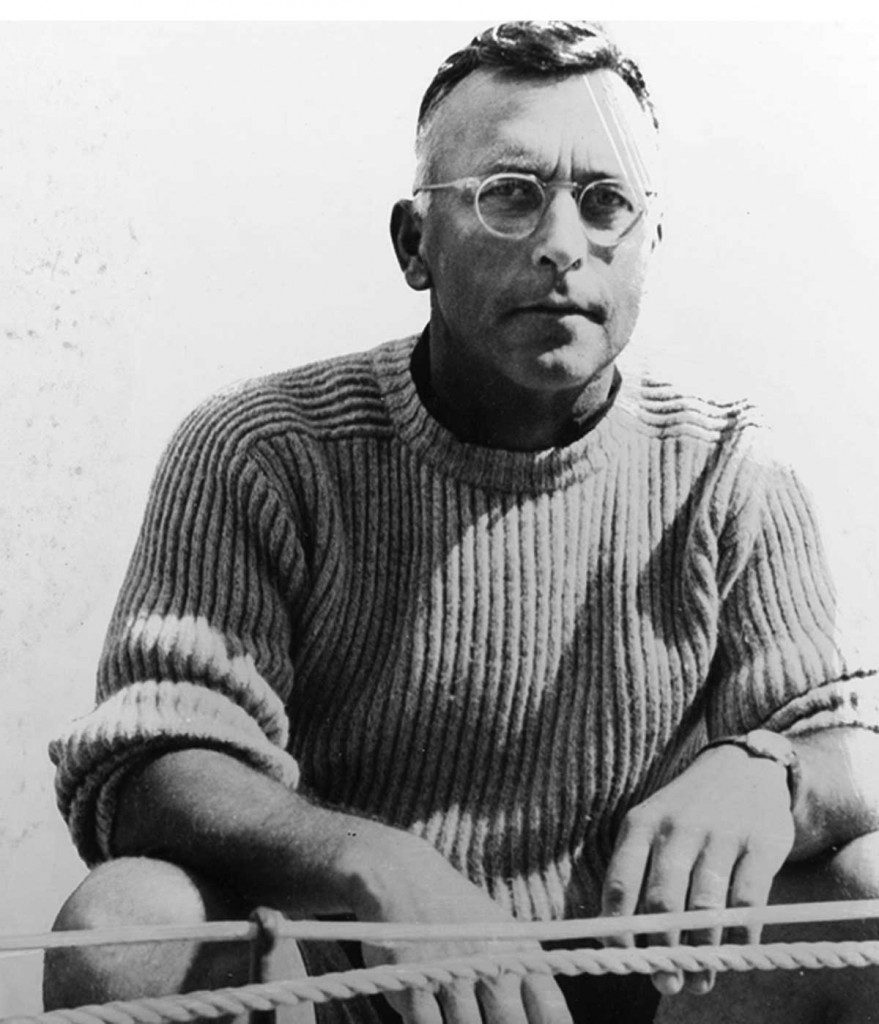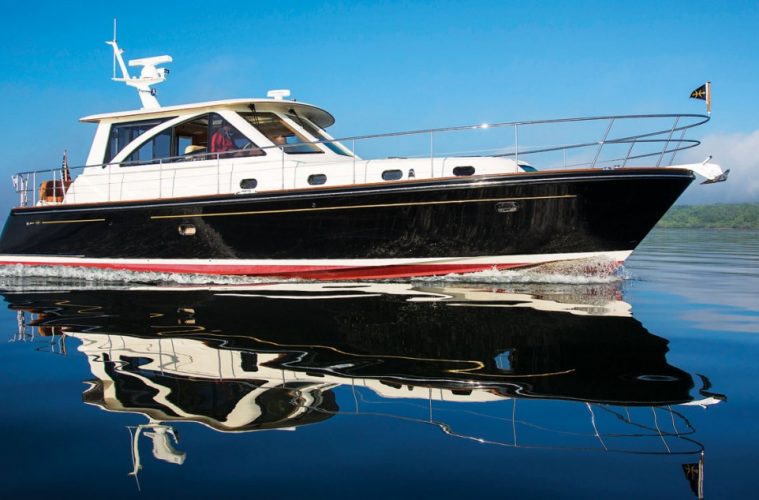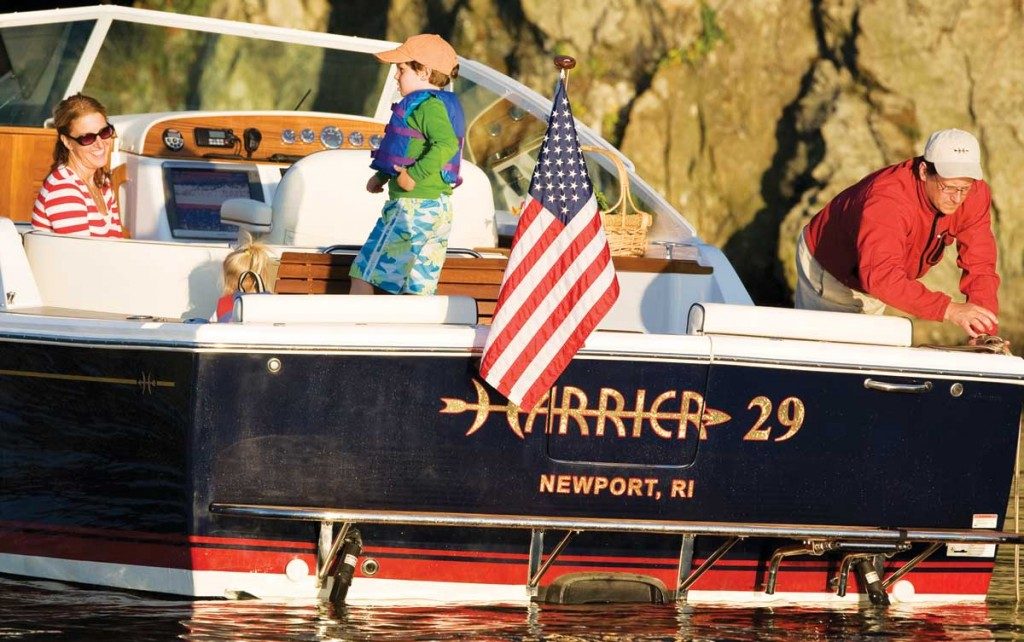Boating is practically in New Englanders’ blood, but for many, one of the pastime’s most pioneering designers—who revolutionized the all-important hull—has long remained unknown.
When you look at a 34-foot U.S. Navy patrol boat, or the Pilot boats in New York Harbor, or the ubiquitous Boston Whaler, you are seeing the work of New England’s most important marine innovator. However, the man himself is relatively unknown, except for perhaps a small circle of boating history buffs. But if you have been aboard a boat along the North Shore, you have most likely benefited from his countless design inventions; thanks to him, power boating has never been the same.
The man in question was C. Raymond Hunt, a scientist whose education consisted of two years at Phillips Andover and a boat designer who never studied naval architecture. Known as the “New England Archimedes,” he designed both the Boston Whaler and the poetically beautiful Concordia Yawl, along with the 110 and 210 racing sailboats, an improved destroyer hull for the U.S. Navy, and many other sailing and power boats. Arguably, his biggest contribution to the marine world was the deep-V hull, a design that revolutionized motor boating forever.
Ray Hunt, as he was known, burst onto the greater boating scene in Marblehead Harbor in 1923, when, at 15 years old, he won the Sears Cup, the prestigious prize awarded by U.S. Sailing. The next year, he came in second. Two years later, he won the Sears Cup again. He went on to win at the Olympics as well as just about every other sailboat race he ever entered.

C. Raymond Hunt in an undated photo.
“The racecourse was like a chess game to him,” says John Deknatel, president of Hunt Design, one of two companies that carry on Ray Hunt’s name and work. “He could see where all the pieces were, and he always seemed to be headed in the right direction.”
“He started out as a racing sailor,” adds Peter Van Lancker, president of Hunt Yachts. “But he went on to design and build revolutionary boats, both power and sail. He had a curious mind that just wouldn’t stop.”
Hunt Designs, headquartered in a historic red brick building in New Bedford, continues the cutting-edge design work of its namesake for clients as varied as the U.S. Navy and Chris Craft. Hunt Yachts builds a line of Ray Hunt-designed powerboats in Portsmouth, Rhode Island.
According to Deknatel, Hunt actively took part in Marblehead sea life, both as a sailor and a designer. After World War II, he partnered with Ted Hood and worked with the Graves Yard. Hood went on to become one of the nation’s premier sail and sailboat gear manufacturers; the Graves Yacht Yard was a legendary Marblehead waterfront institution. “Yet Ray was a self-effacing, quiet guy—the antithesis of any of that snooty, yachty stuff,” Deknatel says.
Until he died in 1978, Hunt designed boats in conjunction with most of the North Shore’s notable boating figures, including Phil Weld, the late owner of the former Essex County Newspaper chain that included the Gloucester Daily Times and the Newburyport News. (The newspapers are now part of the Eagle-Tribune chain.) In 1980, Weld won the Observer Single-Handed Transatlantic Race, or OSTAR, aboard the Moxie, a trimaran, or triple-hulled, boat. This was a radical departure in yacht racing circles, where monohulls—single-hulled boats—reigned until then. Today’s America’s Cup boats are multihulls.
“Together, Hunt and Weld built a big (double-hulled) catamaran,” says Winn Willard, vice president of Hunt Design. “It did not work out; the boat broke up. But when it came to boats, they were two wild and crazy guys!”
Deknatel agrees. “In the 1950s, a North Shore friend of [Hunt’s] bought a PT Boat engine, and Ray designed a 50-foot hull to go with it,” Deknatel says. “The result was Sea Blitz, basically a hot rod. It was also a big design departure, halfway to the Deep-V hull that revolutionized power boating.”
The Deep-V hull, which Hunt developed throughout his early design career, changed the traditional bow and underside of motorboats to a shape resembling its name; Deep-V, or more correctly high deadrise hull, is a boat hull that has at least 20 degrees of deadrise angle or more, over its length. Deadrise angle is the angle between horizontal and the hull bottom. A flat-bottomed hull has zero degrees. A deep V shape, or high deadrise angle, enables the boat to slice through the water, instead of pounding down on top of each wave. The result is a more comfortable ride for the passengers, while the defined centerline enables the boat to better stay on course.
Hunt Harrier 29, a dayboat with space for entertaining
“However, there are a million variations on the Deep-V and really no clear demarcations between Deep-V and modified V,” says Willard. “Ray’s original deadrise angle was 24. Today, that is pretty much reserved for very high-speed boats. Most are 20 or less. I like to say not all Deep-Vs are created equal because the difference between a good hull and a poor one is in the details. Our hulls start at 20 to 22 aft and twist up to 50 to 60 forward, while some will be 20 all the way. Needless to say, those don’t have a very comfortable ride. Ray’s hulls always twisted this way.”
Once Sea Blitz proved both fast and sea friendly, Hunt built a lobster boat for his own use, calling the hull design “Huntform.” The Graves Yard built several Huntform boats, predecessors to the ultimate Deep-V, including one tested by the U.S. Navy Bureau of Ships.
Once the Deep-V hull became known to the power boating world, there was no going back; in 1960, an early version handily won the Miami to Nassau powerboat race. In 1961, the Bertram Yacht Company began production of the famous Bertram 31, and Powerboat design has been dominated by the Deep-V hull ever since.
Surprisingly, Ray Hunt never successfully patented his revolutionary design. In 1958, an obscure sailing magazine published an article about his new hull shape; when Hunt filed for a patent a year later, the previous publication negated his patent, therefore making the Deep-V hull an idea available to all.
During the same period of time, Hunt developed the design for the Boston Whaler, probably the single most popular recreational boat known. “Ray had the big ideas,” says Willard. “He worked with people who refined them. He was not inhibited; he had a lot of what were, at first, considered crazy ideas.”
“The Deep-V hull was one of those crazy ideas,” Deknatel says. “But if you look at the boats in Marblehead Harbor now, 90 percent of the power boats have Deep-V hulls.” Willard adds, “The same is true at any boat show, though the highest and best use of the design is in the military or commercial field. New York City police boats, Coast Guard escort boats, pilot boats in Boston Harbor and in harbors everywhere go to work each day, and the Deep-V makes it possible.”
Hunt Design continues to provide many of these public and private clients with seaworthy vessels.
“Ray knew that the average powerboat had more room for improvement than the average sailboat,” Willard says. “Motors got better in the 1950s and 60s, so he saw that boat hulls had to change.”
In Rhode Island, Hunt Yachts has developed a niche of high-end powerboats, most of them in the 25- to 29-foot range, and builds between 30 and 40 of them per year. “The company falls somewhere between the artisanal and production boat manufacturers,” says Deknatel. “We can sell, make, and broker the boat, caring for the vessel from cradle to grave.”
“Hunt designs are innovative without succumbing to cliches,” says Van Lancker. “At Hunt Yachts, we build boats that never go out of style.” huntyachts.com; huntdesigns.com


